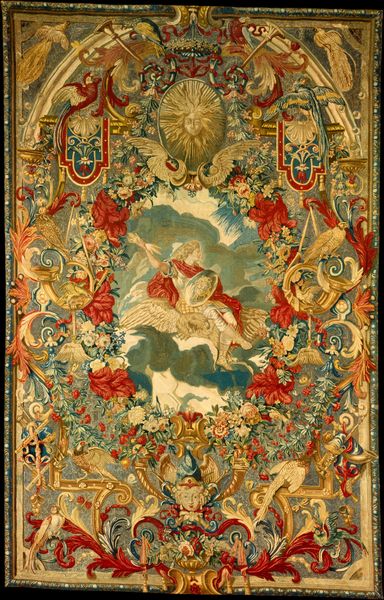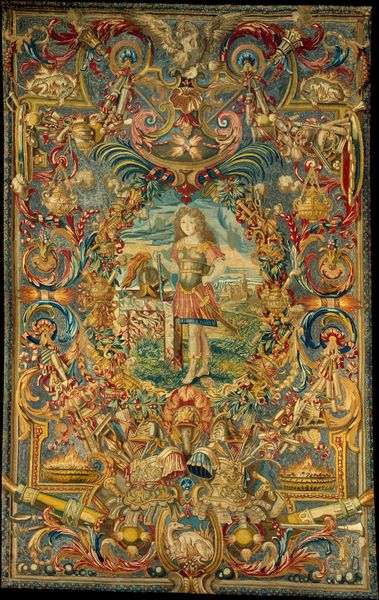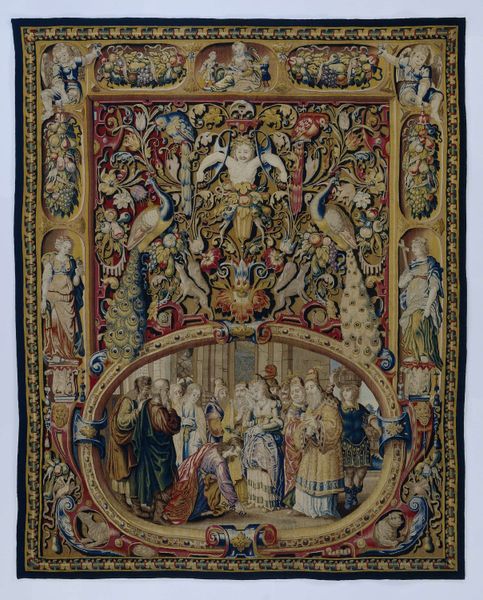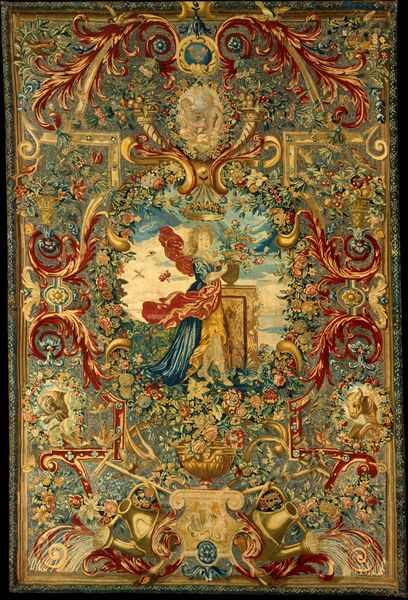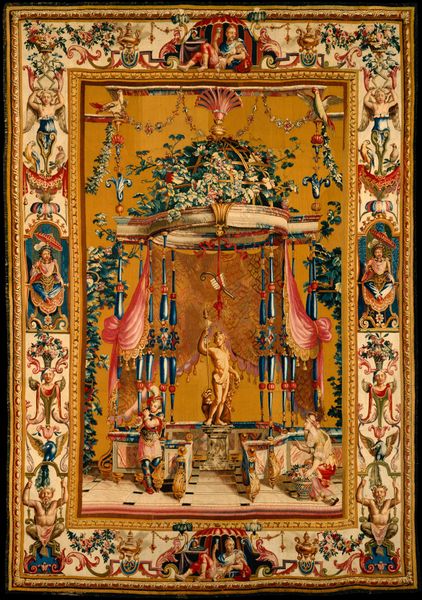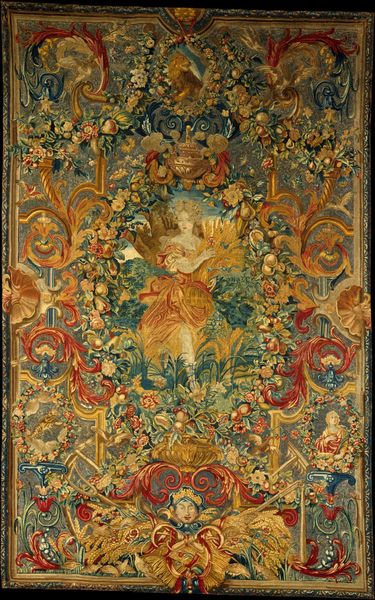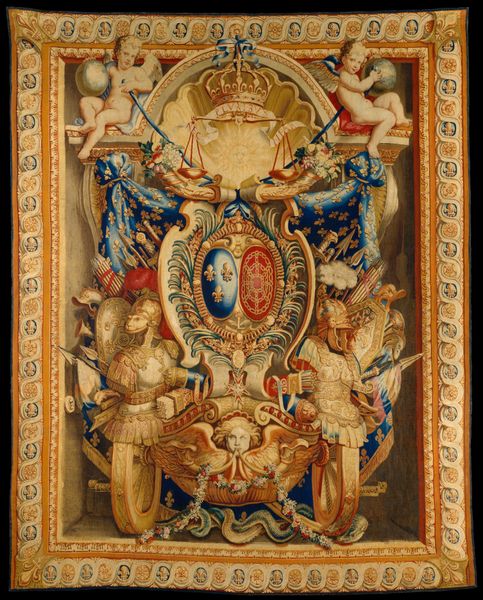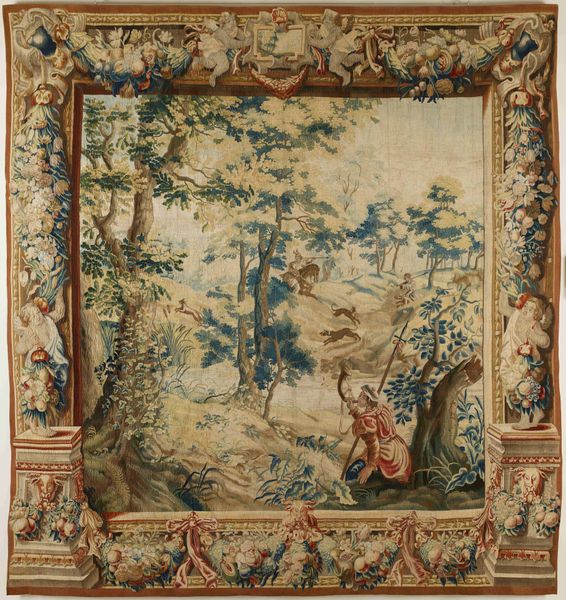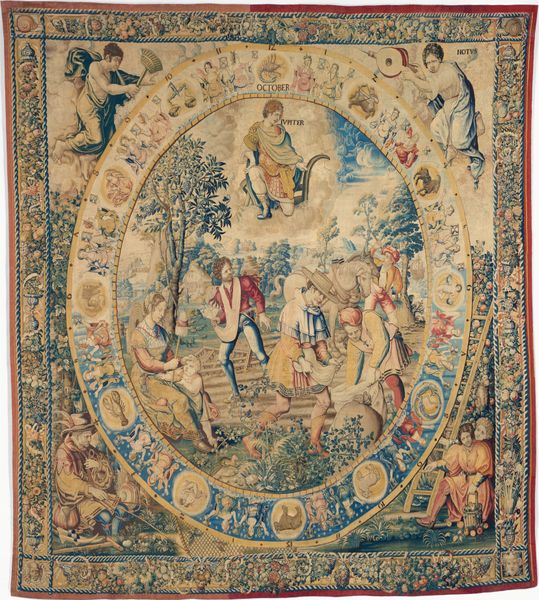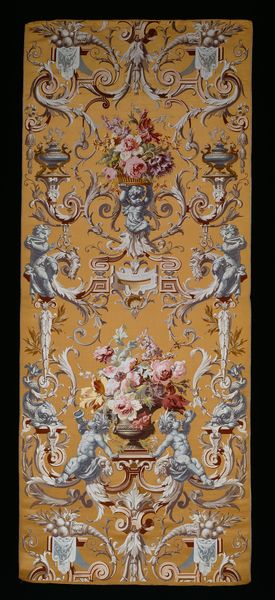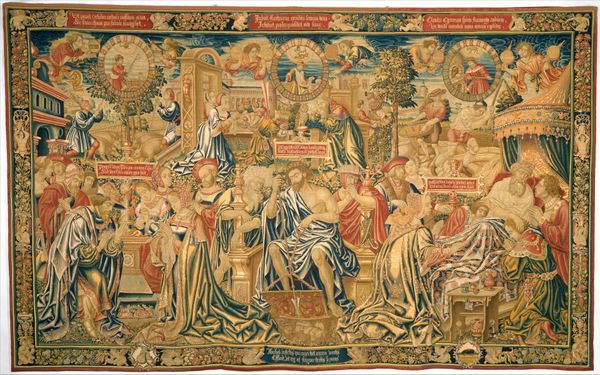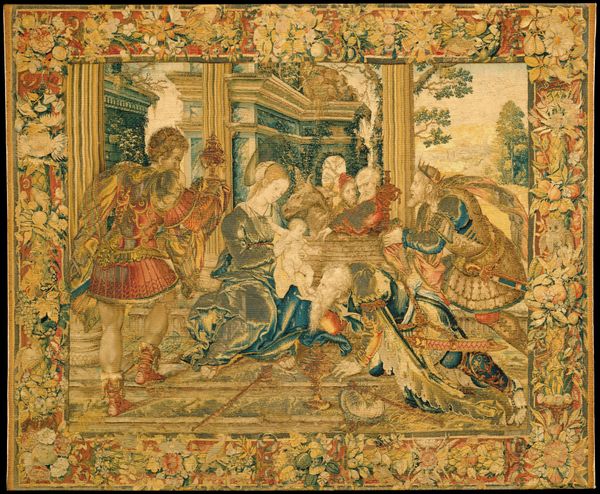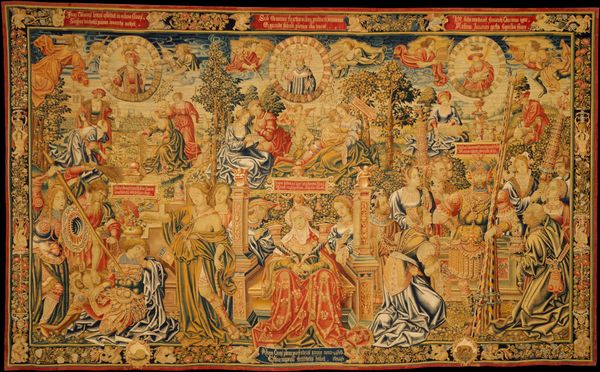
silk, textile, wool
#
allegory
#
baroque
#
silk
#
textile
#
wool
#
animal print
#
figuration
#
history-painting
#
trompe-l'oeil
#
decorative-art
Dimensions: 129 x 86 1/4 x 5 in. (327.66 x 219.08 x 12.7 cm)
Copyright: Public Domain
Curator: What strikes me first is the density of ornamentation. The composition feels quite busy and yet there's a visual rhythm in the repeated motifs and use of color. Editor: Indeed. This is "An Allegory of Spring," a textile work conceived by Charles Lebrun around 1680, and currently residing here at the Minneapolis Institute of Art. We're looking at a large tapestry woven from wool and silk. Knowing the historical context, specifically the reign of Louis XIV, really shapes how one interprets the piece. The decorative art served to bolster the image of the Sun King, framing him within a narrative of divine right. Curator: I see that now in the symbols, particularly the regal eagles at the bottom, supporting that urn brimming with flora, and even those hunting trophies at the very top which represent domination and power. However, beyond the clear intent to demonstrate absolute power, how are we to understand it through today's cultural lens? Can we embrace the tapestry as just one more beautiful piece, or do we acknowledge its purpose? Editor: That’s an essential question. Can we appreciate the technique, the formal arrangement of elements, the play of light across the different textures, without fully condoning its political agenda? The figures feel intentionally posed in a balanced composition with clear symmetry. However, understanding its role in constructing and reinforcing power structures cannot be ignored. It reflects how art, throughout history, has been interwoven with systems of power, patriarchy, and colonialism. This artwork's power lies in its engagement with cultural politics. The composition's structural devices work in harmony to serve the purpose of power, a symbolic display intended to justify power. Curator: The very fabric speaks of the aristocratic world from which it was created. What I find really captivating about the artwork is its inherent tension between propaganda and masterful construction. Do you see those implied frames, how the narrative seems to emerge from various perspectival planes, almost in trompe l'oeil fashion? Editor: Absolutely. And perhaps that tension you mention is precisely what makes it a compelling piece for contemporary audiences. By unpacking these historical works, examining the role of gender, and exploring systems of power, we expose historical structures but are also able to understand present biases. Curator: Looking closely allows us to see past its inherent artifice and see it instead as a cultural artifact. Editor: It also invites us to interrogate not only art history but its relationship to theory. A valuable invitation indeed.
Comments
minneapolisinstituteofart about 2 years ago
⋮
This embroidered hanging was probably part of a set depicting the four seasons. The personification of spring is shown surrounded by flowers and musical instruments. Also associated with spring are the garden tools (lower foreground), the insects and nesting birds in the foliage, and the signs of the zodiac--Aries (the ram), Taurus (the bull), and Gemini (the twins). Designed by the painter Charles Le Brun, this hanging was made for the Duc de Créquy in the 1680s. The embroidery may have been done at the Convent of St. Joseph in Paris. The design is worked in petit point, and the silk background is embroidered in a diamond, or diaper, pattern.
Join the conversation
Join millions of artists and users on Artera today and experience the ultimate creative platform.
